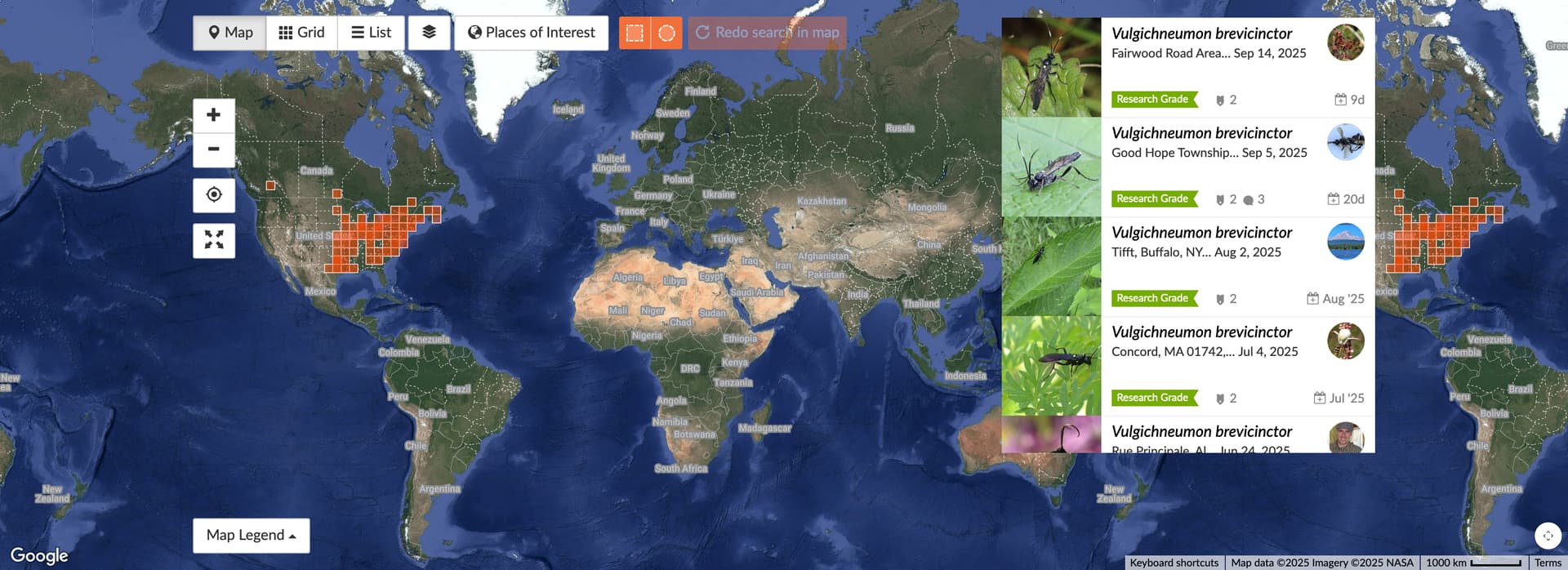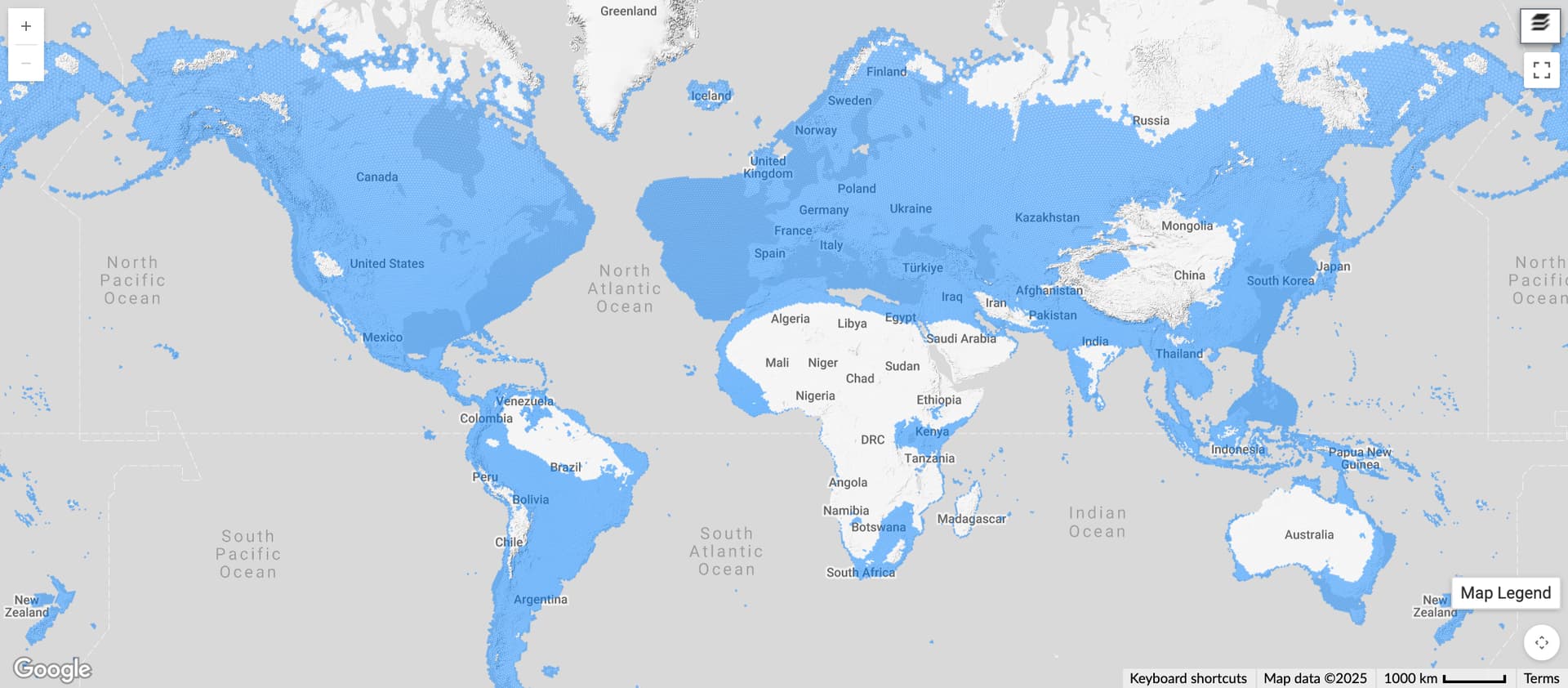Thanks for the update, Tony. To me, a priority should be to understand why the geomodel for some species is covering such a vast area without confirmed observations. For example, the map of Research Grade observation for this wasp looks like this:
It only has Research Grade observations in North America, yet its new geomodel looks like this:
Even leaving aside the large areas of ocean included, there needs to some mechanism to get the model to back off in areas outside of the known distribution, either by masking the geomodel to within some buffer of Research Grade observations, or being more conservative about offering genus or family-level suggestions.
For building the geomodels, it might be useful to discard some small percentage even of the Research Grade observations which are outliers in terms of geography or other variables, to produce more conservative models. [In this case, there might have been a very small number, two or three, of non-North-American RG observations when the model training set was pulled]

